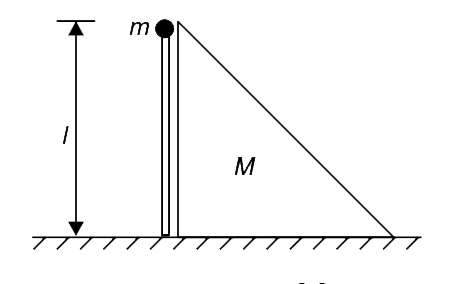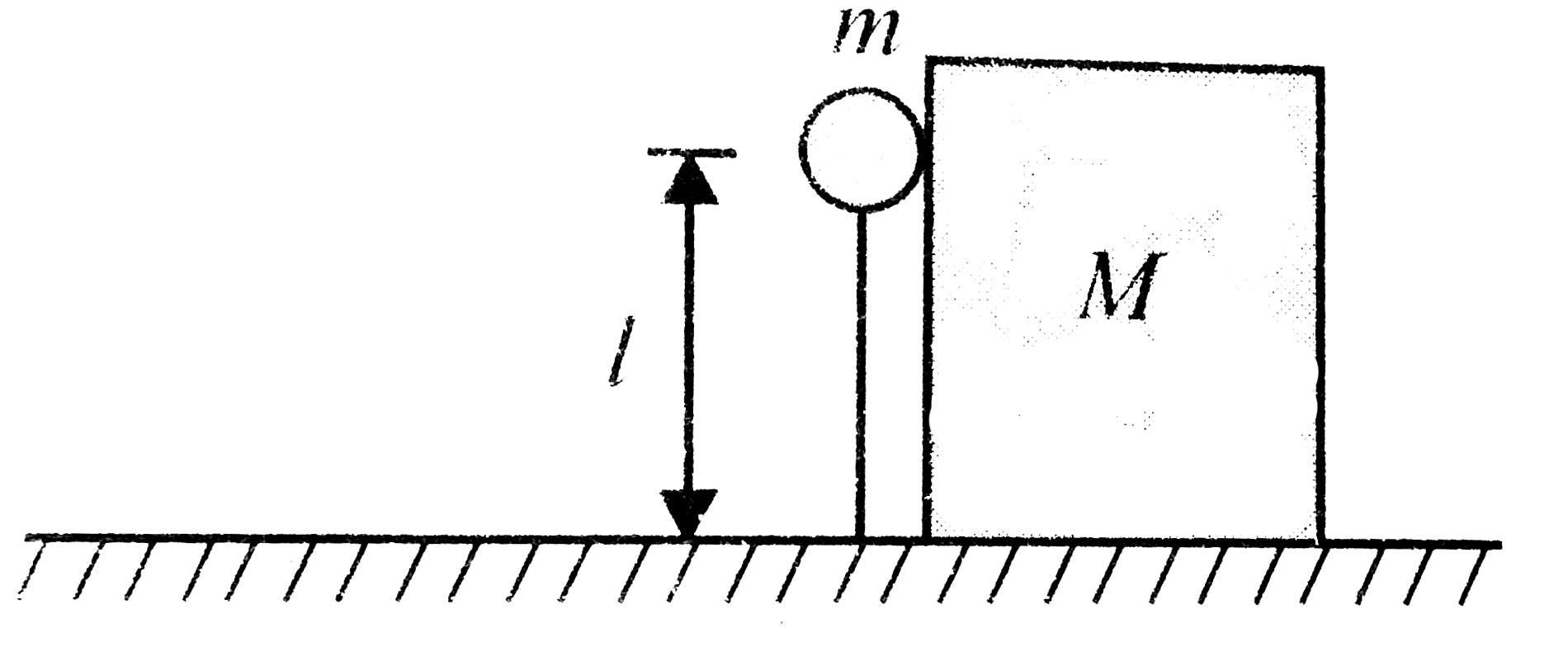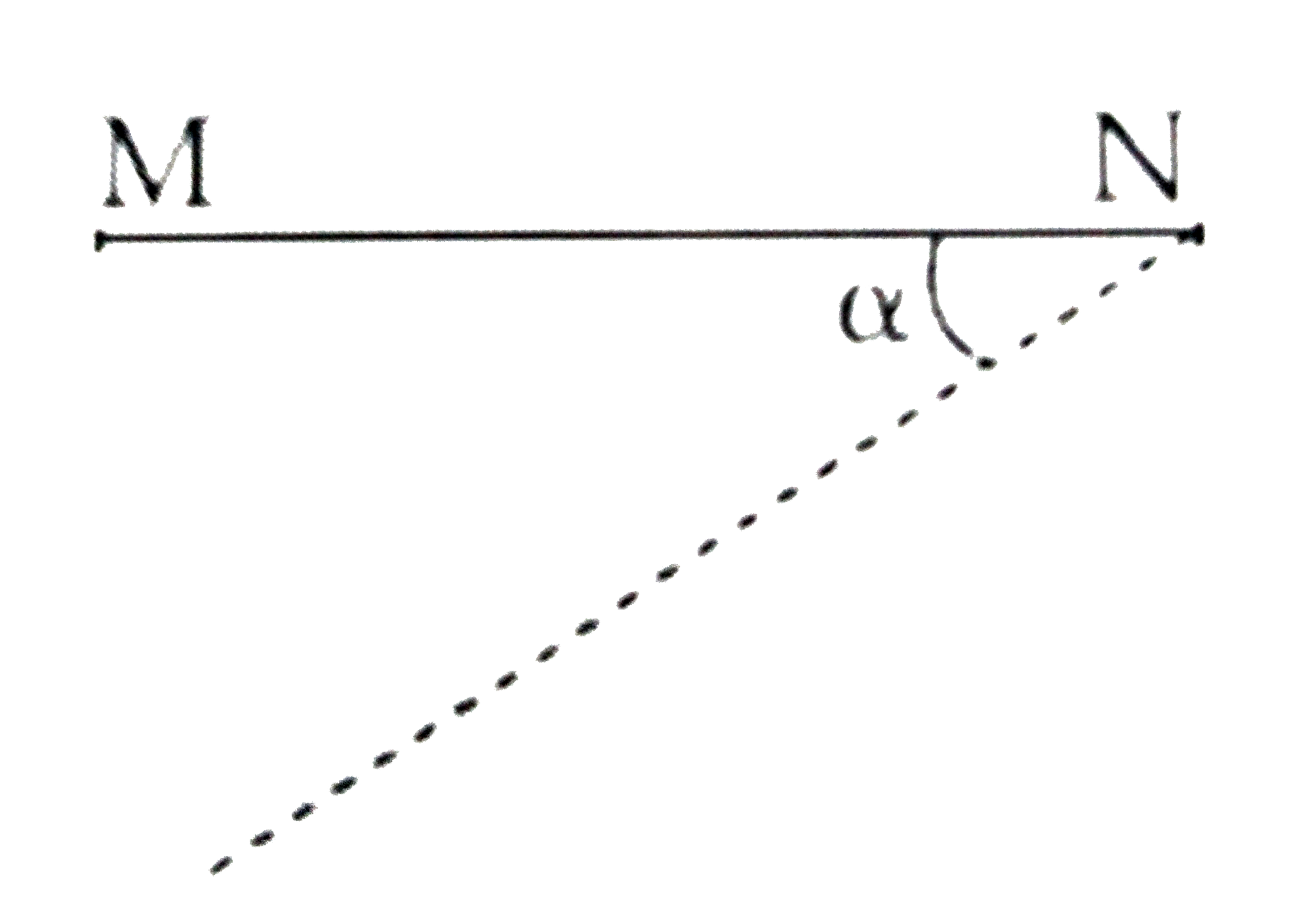A weightless rod of length l with a small load of mass m at one of its end is held vertical with its lower end hinged on a horizontal surface. The load touches a wedge of mass M in this position. A slight jerk towards right sets the system in motion (see figure), with rod rotating freely in vertical plane about its lower end. There is no friction.

(a) For what mass ratio Mm will the rod form an angleθ=π/3 with the vertical at the moment the load separates from the wedge? (b) What is speed of the wedge at that moment? Neglect friction.
Topper's Solved these Questions
Similar Questions
A weightless rod of length l with a small load of mass m at the end is hinged at point A as shown and occupies a strictly vertical position, touching a body of mass M. A light jerk sets the system in motion.
a. For what mass ratio M/m will the rod form an angle α=π/6 with the horizontal at the moment of the separation from the body?
b. What will he the velocity u of the body at this moment? Friction should be neglected.

View SolutionA weightless rod of length l with a small load of mass m at the end is hinged at point A (Fig.) and occupies a strictly vertical position, touching a body of mass M. A light jerk sets the system in motion . For what mass ratio M/m will the rod form an angle α=π/6 with the horizontal at the moment of the separation from the body ? What will be the velocity u of the body at this moment ? Friction should be neglected.

View Solution
Knowledge Check
A rod of length l whose lower end is fixed on a horizontal plane, starts toppling from the vertical position. The velocity of the upper end when it hits the ground is.
A√g/lB√3glC3√g/lD√3g/(l)A thin rod of mass m and length l is hinged at the lower end to a level floor and stands vertically. Then its upper end will strike the floor with a velocity given by:
A√2glB√3glC√5glD√mgl
A weightless rod of length l with a small load of mass m at the end is hinged at point A as shown and occupies a strictly vertical position, touching a body of mass M. A light jerk sets the system in motion.
a. For what mass ratio M/m will the rod form an angle α=π/6 with the horizontal at the moment of the separation from the body?
b. What will he the velocity u of the body at this moment? Friction should be neglected.

View SolutionA rod of mass M and length l attached with a small bob of mass m at its end is freely rotating about a vertical axis passing through its other end with a constant angular speed ω. Find the force exerted by the system (rod and bob) on the pivot. Assume that gravity is absent.
View SolutionA thin rod MN free to rotation in the vertical plane about the fixed end N is held horizontal when the end M is released the speed of this end when the rod makes an angle α with the horizontal will be proportional to : (see figure)

View SolutionA thin rod MN free to rotation in the vertical plane about the fixed end N is held horizontal when the end M is released the speed of this end when the rod makes an angle α with the horizontal will be proportional to : (see figure)

View SolutionA rigid rod of mass m & length l is pivoted at one of its ends. If it is released from its horizontal position, find the speed of the centre of mass of the rod when it becomes vertical.
View SolutionA rigid rod of mass m & length l is pivoted at one of its ends. If it is released from its horizontal position, find the speed of the centre of mass of the rod when it becomes vertical.
View Solution
